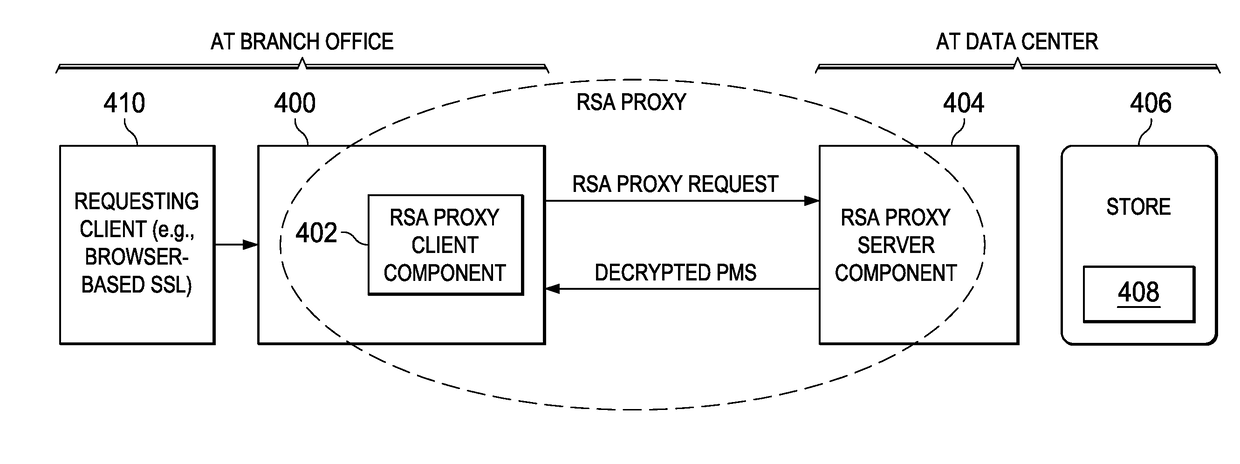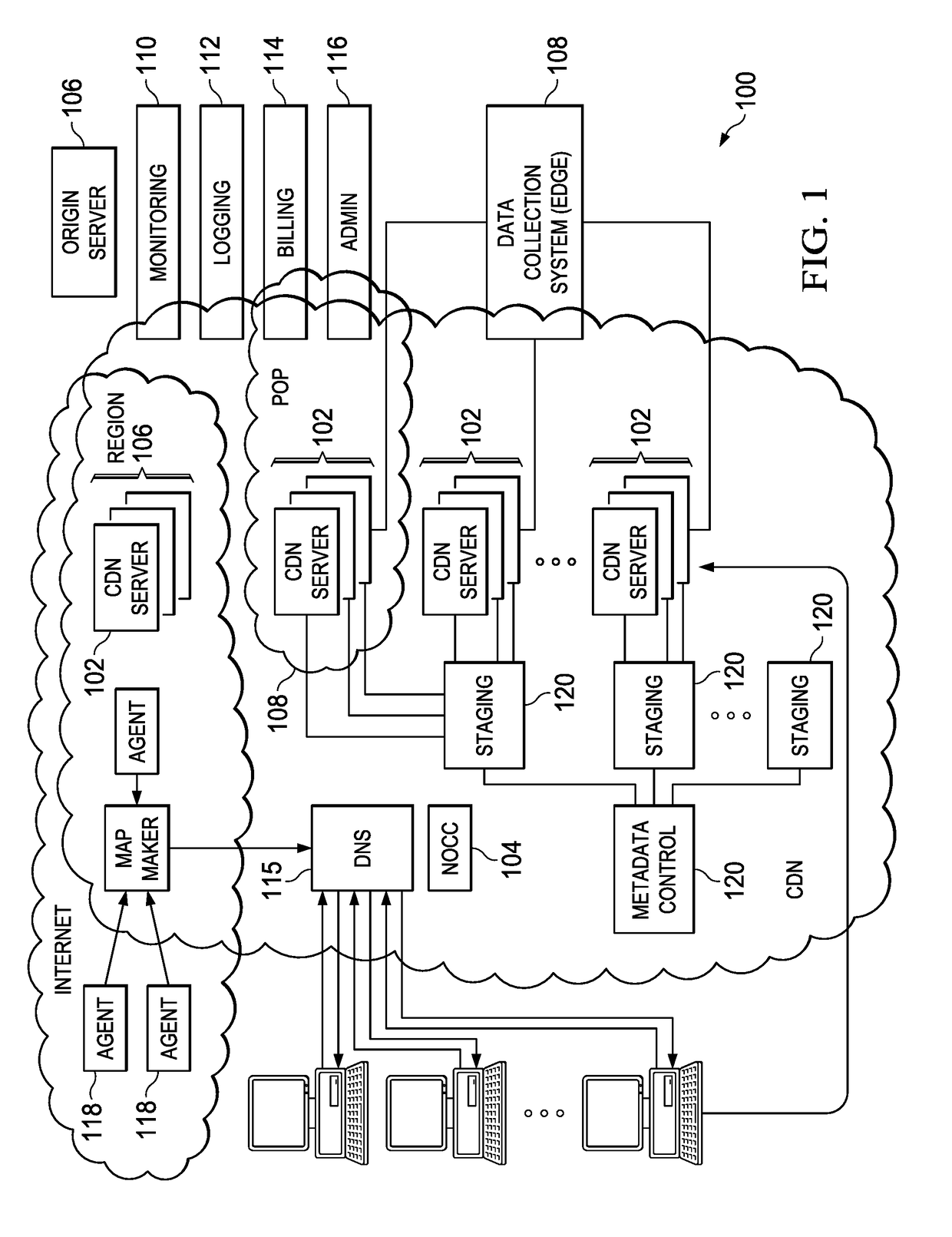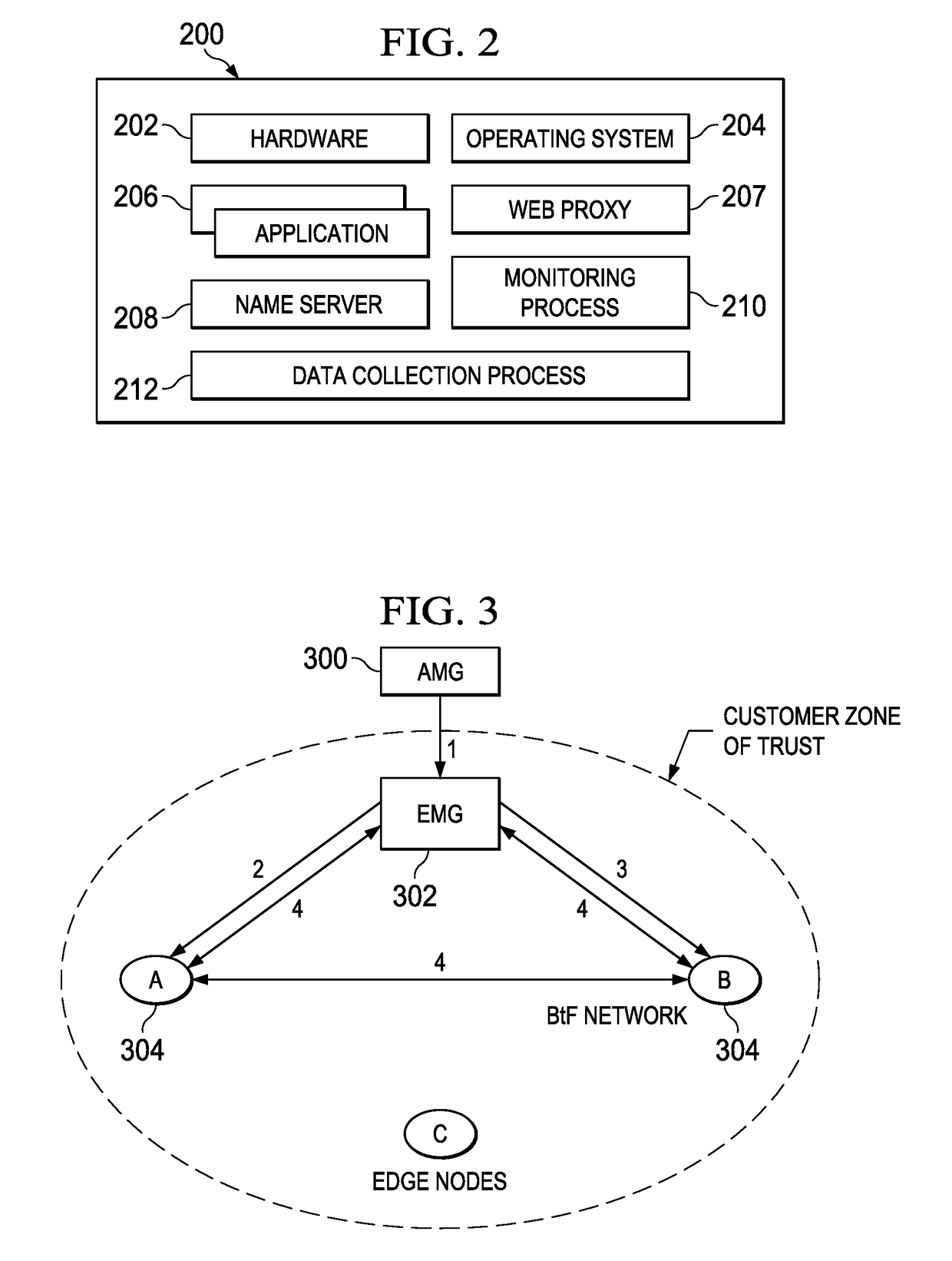Providing forward secrecy in a terminating TLS connection proxy
a forward secrecy and terminating tls technology, applied in the field of secure networkbased communications, can solve the problems of significant security risks in the storage and use of key, the inability to fully ensure the security of the rsa proxy client component, and the inaccessibility of the ssl decryption key to the rsa proxy client softwar
- Summary
- Abstract
- Description
- Claims
- Application Information
AI Technical Summary
Benefits of technology
Problems solved by technology
Method used
Image
Examples
Embodiment Construction
[0021]FIG. 1 illustrates a known distributed computer system that (as described below) is extended by the techniques herein to provide a single HTTP-based platform with the ability to deliver online HD video at broadcast audience scale to the most popular runtime environments and to the latest devices in both fixed line and mobile environments.
[0022]In a known system, such as shown in FIG. 1, a distributed computer system 100 is configured as a CDN and is assumed to have a set of machines 102a-n distributed around the Internet. Typically, most of the machines are servers located near the edge of the Internet, i.e., at or adjacent end user access networks. A network operations command center (NOCC) 104 manages operations of the various machines in the system. Third party sites, such as web site 106, offload delivery of content (e.g., HTML, embedded page objects, streaming media, software downloads, and the like) to the distributed computer system 100 and, in particular, to “edge” ser...
PUM
 Login to View More
Login to View More Abstract
Description
Claims
Application Information
 Login to View More
Login to View More - R&D
- Intellectual Property
- Life Sciences
- Materials
- Tech Scout
- Unparalleled Data Quality
- Higher Quality Content
- 60% Fewer Hallucinations
Browse by: Latest US Patents, China's latest patents, Technical Efficacy Thesaurus, Application Domain, Technology Topic, Popular Technical Reports.
© 2025 PatSnap. All rights reserved.Legal|Privacy policy|Modern Slavery Act Transparency Statement|Sitemap|About US| Contact US: help@patsnap.com



